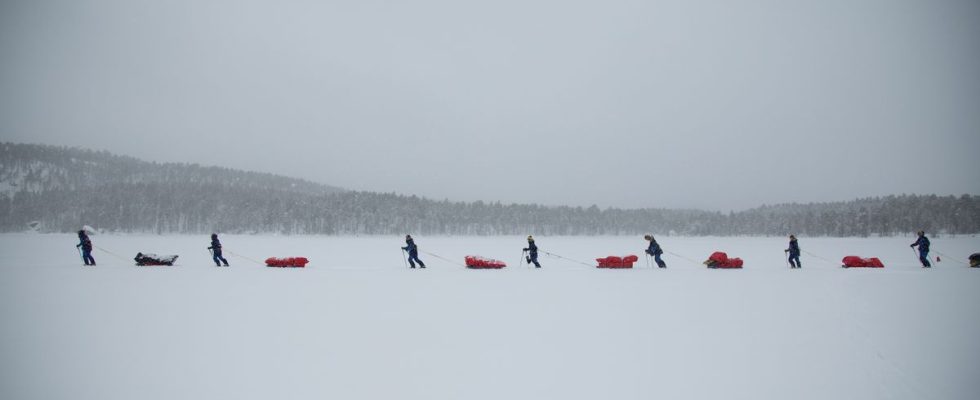We had met them in mid-January, in Paris, when they had just returned from forty days of immersion in the Amazon forest, on the French Guiana side. Franco-Swiss explorer Christian Clot and the 19 non-professional adventurers accompanying him warned that they were only passing through France. Time to recharge the batteries and set off again.
Here we are. With a little delay, the “climatonautes” have just taken off for laplandbeyond the Arctic Circle, for a further forty-day immersion, the second of three stages of their scientific expedition entitled Deep Climate.
After the humid heat, the polar cold
After the humid heat and the almost constant rains of the equatorial forest, this time they will face the rough conditions of the Finnish polar lands. They will progress there independently on skis, pulling sleds loaded with two tonnes of equipment, in temperatures ranging from -10 to -30°C and in a context of very high weather variability.
All this not so much for the taste of effort as for science. This is the red thread of Deep Climate: studying the ability of humans to adapt to extreme and changing conditions such as those to which climate change will subject us. To do this, Deep Climate does not do things by halves by subjecting climatonauts to around forty scientific protocols before, during and after the immersions. Everything goes there, from human cognition to general physiology, through the study of emotions, social interactions, the microbiota.
“Study how we transform ourselves in the face of changing conditions”
This is the strength of Deep Climate, according to Christian Clot: “We study very little how humans change when faced with extreme and changing conditions, he said. And when we do, it’s often in the lab, after the experience has passed, and on super-trained humans. Soldiers, astronauts…”
After Lapland, the climatonauts will leave one last time, between next May and June, for Saudi Arabia, in one of the hottest and arid deserts in the world. And again for 40 days of journey.

